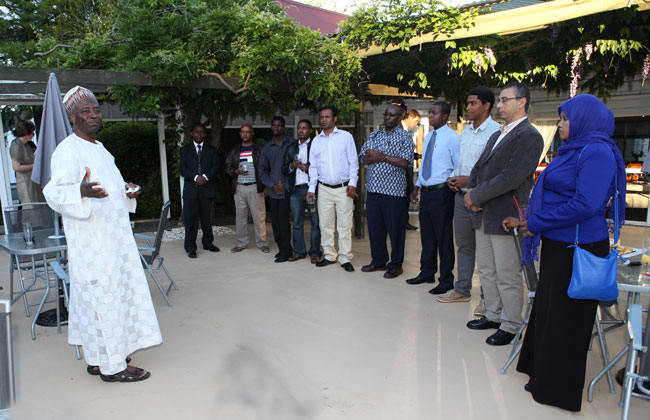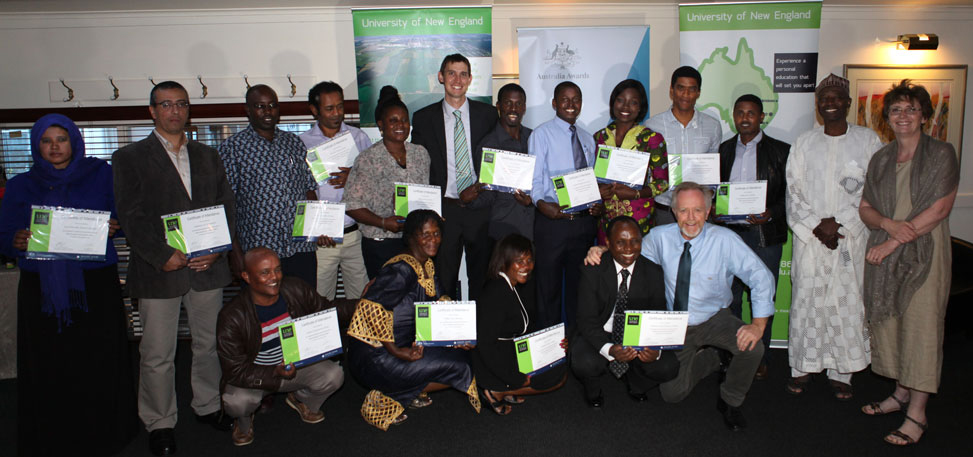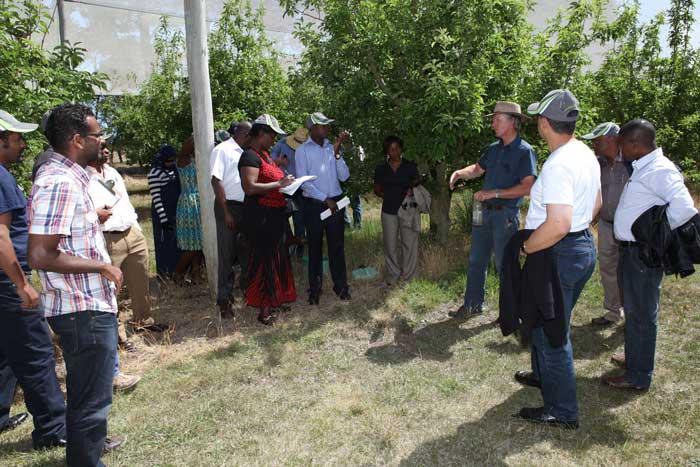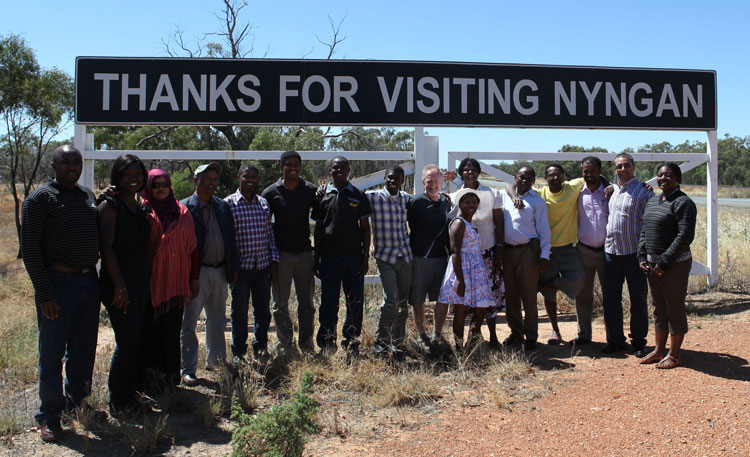Friday 15 November saw the end of the second short course for African participants on small scale irrigation and water harvesting at the University of New England, Armidale.
 Lecturer Isa Yunusa encourages the group to strive for great thingsThe five weeks of activities culminated in a great dinner and presentation of certificates at the beautiful Moore Park Inn. There were mixed emotions as the night progressed. Our friends were keen to get home to see their families and get back to their normal lives yet felt they would miss the companionship that has grown during their stay.
Lecturer Isa Yunusa encourages the group to strive for great thingsThe five weeks of activities culminated in a great dinner and presentation of certificates at the beautiful Moore Park Inn. There were mixed emotions as the night progressed. Our friends were keen to get home to see their families and get back to their normal lives yet felt they would miss the companionship that has grown during their stay.
 Proud participants following presentation of certificates with Peter Fitzgerald (mother), Andrew Storrie and Kathy Dobos
Proud participants following presentation of certificates with Peter Fitzgerald (mother), Andrew Storrie and Kathy Dobos
Their training is not complete however. They have action plans developed and refined during the course which they will begin to implement when they arrive home.
In February 2014 we will meet both groups from this year in South Africa where we will refine their projects and study successes and problems encountered by small landholders in the Limpopo Province.







